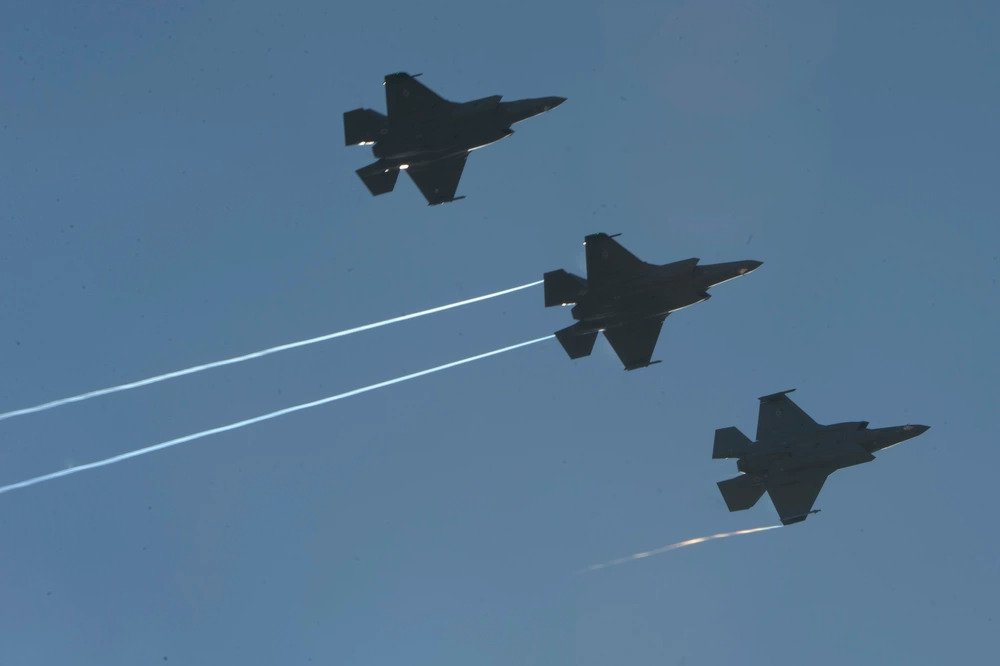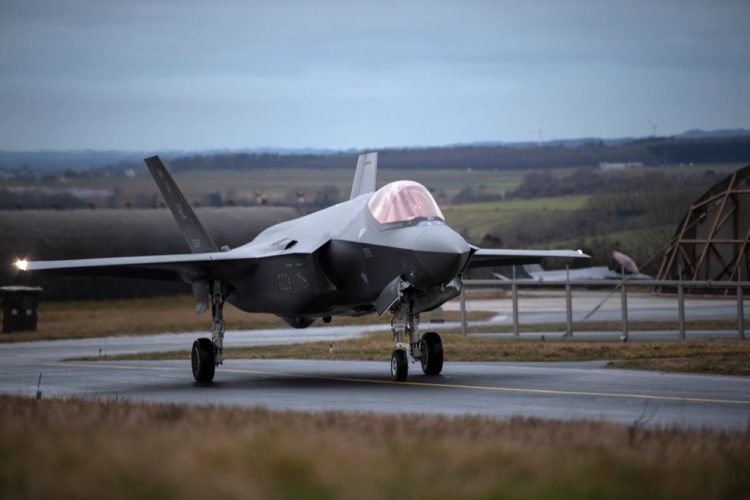Following Germany’s decision to increase its defense spending to 2% of its economic output in response to the Russian invasion of Ukraine, Berlin is now set to purchase 35 units of the modern and advanced F-35 Joint Strike Fighter jet to replace its aging fleet of Tornado aircraft. It can be remembered that the German Defense Ministry previously ruled out purchasing the F-35 in 2019, where they initially preferred the fourth-generation Eurofighter Typhoon or the F/A-18E/F Super Hornet to replace the Tornados.
This move comes after the return of heightened nuclear threats, as Russia had previously put their nuclear force on a “special regime of alert” during the start of their invasion of Ukraine. This left the US, along with other main players in the conflict, stunned as Putin had threatened them with nuclear weapons. While it is unlikely that the Ukrainian conflict would generate a nuclear war at the moment, Russia cannot be taken for granted in terms of its nuclear capability. It has the world’s largest nuclear arsenal at 6,300 warheads, with the US trailing at 5,800 nuclear warheads.
It looks like the Germans are putting their 100 billion euro military budget to good use. These F-35 Lightning II aircraft are capable of carrying nuclear weapons(should Germany ever make them) and, of course, defending German air space when the time requires. The Luftwaffe, along with German Air Force commander Ingo Gerhartz stated that buying the F-35s was necessary at present due to Russia’s aggression in the region.
“There can be only one answer to [Russian President Vladimir] Putin’s aggression,” said the commander. “Unity in NATO and a credible deterrent. This in particular means there is no alternative but to choose the F-35.”
It’s important to note that Germany does not have nuclear weapons; however, it is part of a nuclear deterrence system as it is still capable of carrying US nuclear bombs in the case of an emergency. Some of these bombs are stationed in Büchel Air Base, Germany. Furthermore, interoperability between the US and Germany would greatly increase as they both use the F-35, making it easier to carry out NATO air defense and air superiority missions if required.

Other allied countries such as Switzerland, Finland, the UK, the Netherlands, Belgium, Italy, Denmark, and Norway have picked the F-35 as their fighter jet of choice, making cooperation within the region smoother in the case that they were to respond to any attacks.
In light of this decision, German Defense Minister Christine Lambrecht also stated that it would be upgrading its existing Eurofighter Typhoon fighter jets to be capable of electronic warfare. The fleet of Eurofighters are said to be replaced in 2040 as the Future Combat Air System (FCAS), joint development of Dassault Aviation, Airbus, Indra Sistemas, and Thales Group, is said to be developing Next-Generation Weapon System (NGWS) and a New Generation Fighter (NGF) that is to also replace France’s Rafales, Spain’s EF-18 Hornets, and the aforementioned German Typhoons.
“With the F-35 and the further development of the Eurofighter in electronic combat, the Luftwaffe is very well positioned for the future,” said Gerhartz.
Despite Germany opting to buy the F-35s, it has also expressed that they remain committed to the program. However, it can be remembered that the FCAS had been at a crossroads, having been stalled as Airbus and Dassault cannot reach an agreement regarding intellectual property rights and workload to launch the research and development phase that would ultimately lead to a prototype jet being made on or before 2027.
“We have done everything possible to sign with Airbus, and I’m waiting for Airbus’ signature,” Dassault CEO Eric Trappier said. “The problem is on the other side of the Rhine.”
Germany choosing the F-35s would also contribute some tension to the FCAS program with the recent decision as Dassault CEO Eric Trappier earlier predicted that Berlin would opt to buy the American fighter jet stating, “We will see with our number-one partner, which is Germany, whether the first decision they make [after investing 100 billion euros] is to sign the FCAS contract, or to buy the F-35.”

The decision to buy the F-35s also did not go down well with Germany’s leftist party as they alleged that it would further fuel the risk of nuclear war in Europe. “We reject arming the Bundeswehr [German army] with new, nuclear-capable combat jets,” said the German opposition’s Deputy Defense Spokesman Ali al-Dailami.
However, the US Ambassador to Germany, Amy Gutmann, welcomed the decision as she thought it was a way to strengthen ties with the US and continually participate in NATO’s nuclear-sharing mission. “Such a strong sign of Germany’s commitment to NATO’s deterrence could not come at a better time,” the ambassador said, speaking about defensive mechanisms against Russian aggression.
If you’re just tuning into SOFREP for the first time, click here to enjoy a free 2-month trial membership and be kept up to date on developments in Ukraine and elsewhere around the globe.










COMMENTS
You must become a subscriber or login to view or post comments on this article.